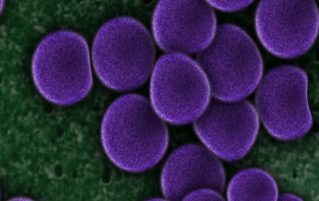

Cells are the building blocks of living organisms, and most of them are so small you cannot see them without a microscope.
In 2015, scientists managed to capture detailed microscopy images of ultra-small bacteria. Scientists debated for years over whether they actually existed, and they are believed to be as small as a living organism can get. The average volume of these cells is 0.009 cubic microns. This is small…..one micron is one millionth of a metre! More than 150,000 of them could fit onto the tip of a human hair. The cells seem to have DNA, ribosomes and some thread like appendages – but are described as very common but a little bit odd! As they are so small they rely completely on other, larger bacteria to survive. It is believed they attach themselves to other microbes using their appendages.
Many, though not all, extremophiles are single celled organisms. One bacterial species, the Deinococcus radiodurans, is able to survive a 15,000 gray dose of radiation. To put this in perspective, 10 grays would kill a human! And even cockroaches, which are incredibly difficult to kill, can only survive just over 1,000 grays. Not only this, but they are officially the world’s toughest bacterium, able to survive extreme cold, dehydration, acidic conditions and vacuums!
If you are in Year 7 or above, you need to be able to recognise the difference between bacterial cells, animal cells and plant cells. You should also be able to label and explain the functions of the organelles. For GCSE students it also explains the difference between prokaryotic and eukaryotic cells.
To help you understand, check out Part 1 of our “How to work with Cell Biology” guide. This describes the structure of an animal cell, a plant cell, and a bacterial cell. It also included some GCSE questions for you to practice, and answers to check your understanding.
Click on the picture below to see the guide.
If you found this useful and think you would benefit from some additional help please contact us.
We welcome guest bloggers.
